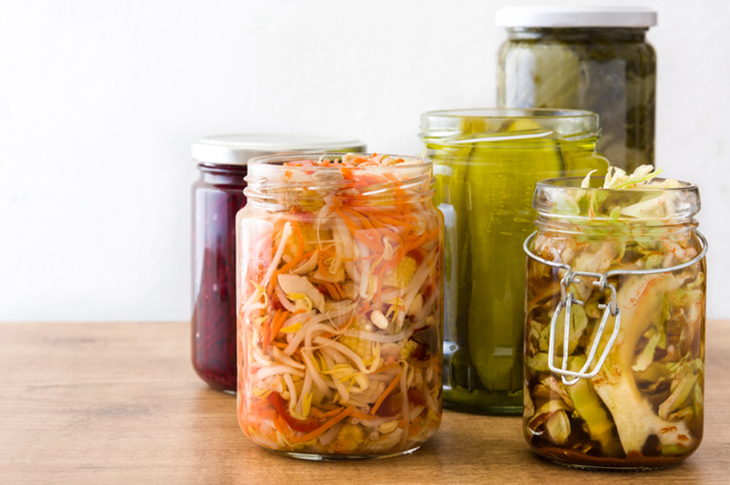If you’re looking for a different and healthy way to enjoy your vegetables, try pickling them. Pickling isn’t new, but in recent years, the art of pickling and fermenting food and drinks has enjoyed renewed popularity.
Pickling preserves food like carrots, celery, or okra, in an acid like brine or vinegar, and may be healthier, especially when it is unprocessed. Fermenting is yet another way to preserve food and drink. The natural process converts carbs into alcohol or acids and promotes the growth of probiotics, which are healthy bacteria and good for your gut health.
Taking a closer look at pickling and fermenting techniques is timely as we have entered Latinx Heritage Month, which is from September 15 to October 15. During this period, we celebrate the rich history, culture, and contributions made by Americans whose ancestors came from Spain, Mexico, the Caribbean, and Central and South America.
The global appeal of pickling and fermenting
Although pickling and fermenting didn’t originate in Latin culture, these techniques have become a staple in many Latin households. The Spanish word escabeche literally means to pickle, but it also describes preserved dishes including fish, which is cooked before it is pickled.
The flavor of escabeche can vary based on the pickling technique, explained Luz Payan, a Chicago native whose family roots are from Axochiapan, Morelos, Mexico. “Escabeche recipes differ from regions from Mexico, Spain, South America, or even the Caribbean islands. In Mexico, they can differ from state to state or even cities within a Mexican state.”
But nothing is as good as Payan’s family recipe. “Our escabeche is pickled and spicy with some added flavors. It complements Mexican dishes, including tortas, tacos, and most grilled meats.” The taste can be addictive, Payan said. “Some people I know even add it to Flaming Hot Cheetos to give them that vinegar and spicy kick!”
Like pickling, fermenting is used in many countries. People worldwide drink fermented beverages like beer or kombucha, but tepache is a traditional Mexican probiotic drink with roots in Central and South America. It’s typically made from pineapple rind, but can contain corn and fruits like apples, guavas, oranges, and pears.
How pickling made its way across the globe
Archaeologists believe pickling has been around since 2400 BC, when Mesopotamians began soaking their food in brine to preserve them. Cucumbers were one of the foods soaked. The resulting pickle was popular because it was easy to transport, hardy, and tasty.
Pickling and pickles made their way around the world as sailors stocked the food item on their journeys. The high level of vitamin C pickles contain helped prevent scurvy.
Even as pickles grew in popularity, different regions developed their nuances. Dutch farmers and East Europeans popularized dill pickles in the US. In the Caribbean, escabeche PR is a favorite, said Lizette Watko, creator of the talk and cooking show, Lizette Invites You. “Something very popular in the Caribbean is green banana escabeche.” In the side dish, guineos en escabeche, green bananas are peeled, boiled, and then marinated with vinegar, onion, garlic, salt, peppercorn, and other flavors.
A look back at fermenting
Fermenting has an even longer history than pickling, going back to 6000 BC. Most cultures can boast some form of fermented food, including Korean kimchi and Indian chutney. Yogurt and cheese are fermented, as are beer and wine.
In addition to preserving food, fermenting adds to the taste by offering more complexity. The process also adds more nutrition to the food. Many people eat and drink fermented foods because of the probiotics that can help digestion. Even though beers are fermented, the brewing process kills off probiotics. However, some beers, like strong Belgian beers, are fermented differently in a way that allows probiotics to grow.
The resurgence of an old practice
Although people never stopped pickling and fermenting, the practice decreased in the last few decades. “I’m in between generations,” Watko explained. “The older folks used to make escabeche and still do.” But for the generations that followed and cooked less frequently, they stopped making escabeche for a time.
Now, however, and in the last few years, the practice has seen a resurgence in more popularity.
The practice of pickling and fermenting foods resonated with people interested in the farm-to-table movement and was a simple way to prepare vegetables. Then, when the pandemic began, many were stuck at home and wanted to try something new, said Watko. “People started cooking at home and going back to the dishes our aunties used to make.”
With many resources available to learn pickling and fermentation techniques, it’s easy to join the trend.
In honor of Latinx Hispanic Heritage Month, try a few gut-friendly recipes, like an easy side dish of escabeche with carrots, onions, garlic and jalapeno, paired with a spicy and refreshing glass of tepache.
Just be sure to prepare your recipes in advance, so the dishes will have time to reach their pickling and fermenting peak before you enjoy them!
The post Try This Gut-Friendly Cooking Technique to Up Your Kitchen Game appeared first on Fitbit Blog.



